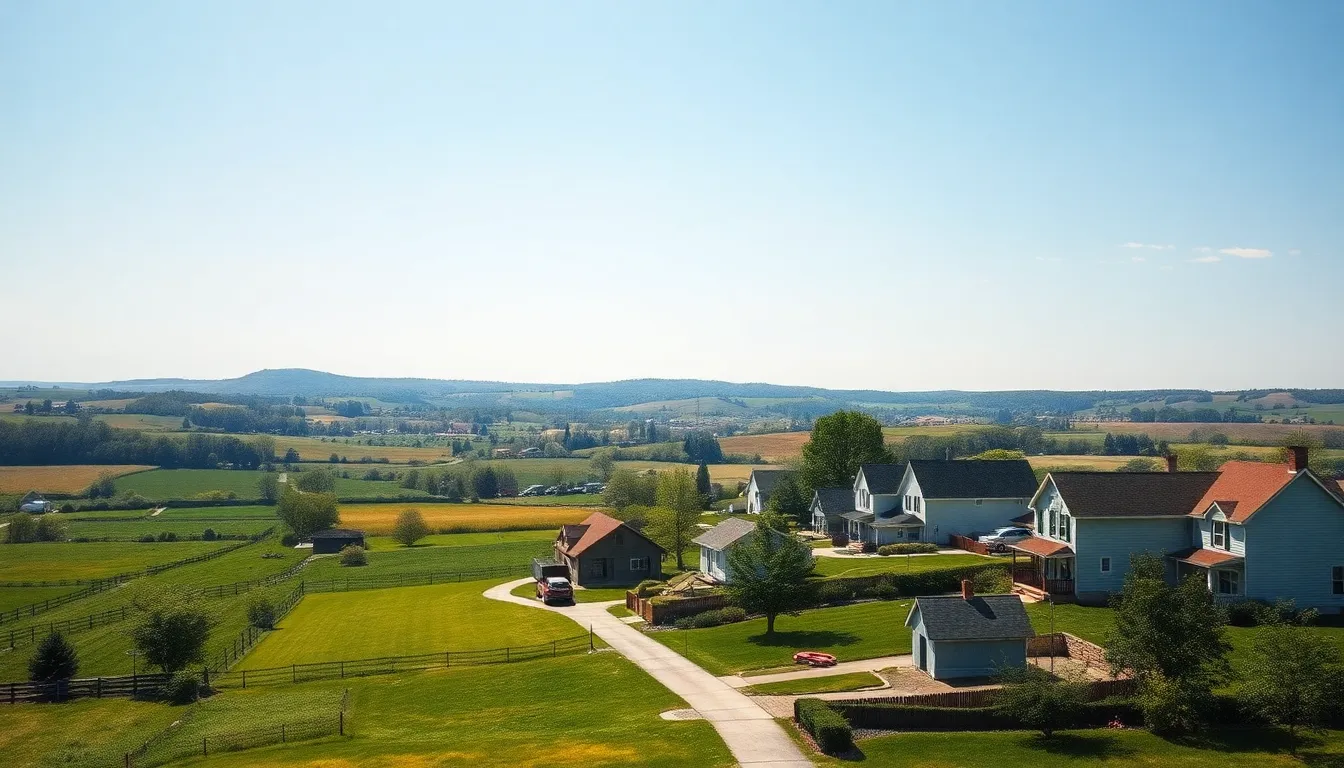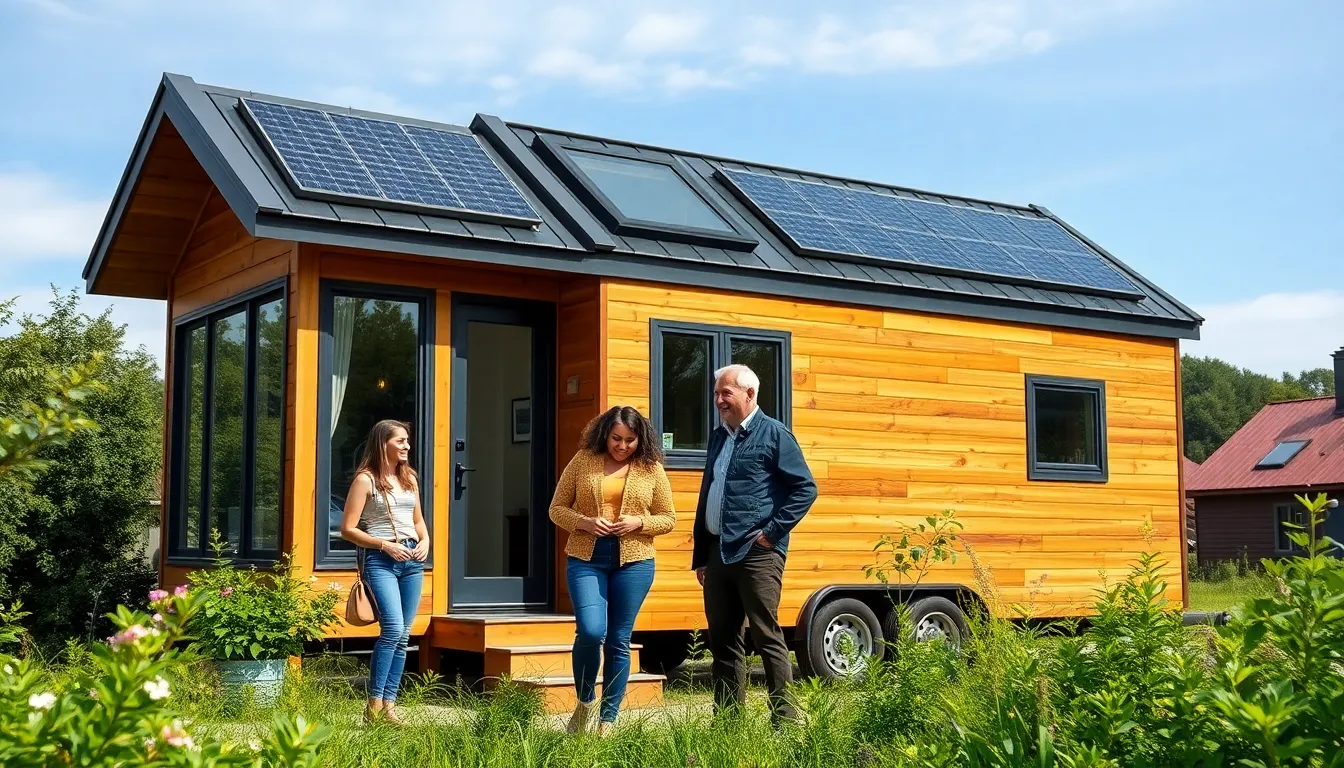Rural housing policy plays a crucial role in shaping the living conditions of millions in less populated areas. As urban centers expand, rural communities often face unique challenges, including limited access to affordable housing, infrastructure deficiencies, and economic stagnation. Addressing these issues requires a nuanced understanding of the specific needs and aspirations of rural residents.
Innovative policies can bridge the gap between urban and rural living standards, fostering sustainable development and enhancing quality of life. By focusing on affordable housing solutions, improved infrastructure, and community engagement, rural housing policy can empower residents and stimulate local economies. Understanding the intricacies of these policies is vital for anyone looking to make a meaningful impact in rural communities.
Table of Contents
ToggleOverview of Rural Housing Policy
Rural housing policy focuses on improving living conditions for residents in rural communities. It addresses challenges unique to these areas, including limited access to affordable housing, inadequate infrastructure, and economic decline. Effective policies aim to create strategies that nurture sustainable development while accommodating the specific needs of rural populations.
Key Components of Rural Housing Policy
- Affordable Housing Development
Affordable housing development remains a priority. Federal and state programs provide funding and incentives for building homes that meet the financial capabilities of low- and moderate-income families.
- Infrastructure Improvement
Infrastructure improvement plays a critical role in rural housing policy. Investments in roads, water systems, and broadband access enhance living standards and attract new residents to rural areas.
- Community Engagement
Community engagement fosters collaboration between local stakeholders and residents. Policies encourage participation in decision-making processes, ensuring that community needs and preferences are addressed.
- Economic Incentives
Economic incentives are vital for stimulating growth in rural areas. Tax credits, grants, and loan programs support small businesses, creating jobs and improving overall economic health within these communities.
- Sustainability Initiatives
Sustainability initiatives promote environmentally friendly practices in rural housing. These initiatives include energy-efficient building standards and the use of renewable resources, contributing to long-term viability.
Rural housing policy encompasses various strategies aimed at overcoming the challenges rural communities face. Understanding these components aids in enhancing living standards and fostering economic growth.
Historical Context

Rural housing policy has evolved significantly over the decades in response to the challenges faced by residents in less populated areas. This evolution reflects shifting social, economic, and political landscapes that have influenced housing initiatives.
Development Timeline
- 1930s: The Great Depression prompted federal involvement in housing through the establishment of the Federal Housing Administration (FHA) and the Home Owners’ Loan Corporation (HOLC). These agencies aimed to provide financial support and make homeownership accessible for many.
- 1960s: The Housing Act of 1964 initiated programs targeting rural communities, addressing issues related to low-income housing and inadequate infrastructure.
- 1970s: The Rural Development Act of 1972 led to the creation of the Rural Housing Service (RHS), fostering investments in rural housing and improving living conditions.
- 1990s: The USDA’s Rural Housing Loan Program expanded access to affordable financing options, enabling more individuals to purchase homes in rural areas.
- 2000s: The demand for sustainable development gained traction, leading to policies promoting environmentally friendly construction practices and smart growth strategies in rural settings.
Key Legislation
- The Housing Act of 1949: This act aimed to improve living conditions across the nation, including rural areas, with an emphasis on reducing blight and providing financing options for home construction.
- The Housing Act of 1974: This legislation expanded housing assistance programs and included provisions for low-income housing development in rural locales.
- The Community Development Block Grant (CDBG) Program: Established in 1974, this program supports community development efforts, including housing improvements in rural areas.
- The Rural Development, Agriculture, and Related Agencies Appropriations Act: This act supports funding for various initiatives aimed at enhancing rural housing and facilities.
- The Farm Security and Rural Investment Act of 2002: This act increased funding for rural housing programs, promoting economic growth and development in rural communities.
Understanding the historical context of rural housing policy provides essential insights into the current landscape and ongoing efforts to address housing challenges in these areas.
Current Trends in Rural Housing
Rural housing experiences evolving trends that reflect changing needs and economic factors. The demand for affordable housing options and innovative financing models drives current developments.
Demand and Supply Dynamics
Demand for rural housing increasingly stems from diverse groups, including retirees seeking peaceful living and remote workers drawn to less urbanized areas. Supply struggles to keep pace largely due to limited construction resources and rising material costs. Data shows that rural communities experience a 15% deficit in affordable housing units relative to demand, exacerbated by an aging home stock. Conversely, the increased interest in rural living since the pandemic has intensified competition for available homes, driving prices higher. To meet this challenge, policymakers focus on incentivizing new construction and rehabilitating existing homes to stabilize local housing markets.
Financing Options
Financing options for rural housing have diversified recently, offering new avenues for developers and homebuyers. Federal programs like the USDA Rural Development loans provide attractive rates and minimal down payments for eligible households. Additionally, private lenders increasingly recognize the potential in rural areas, leading to the emergence of microloans and community investment funds tailored for housing projects. A recent study indicated that community development financial institutions (CDFIs) have tripled their loan volume in rural housing projects over the past five years. These innovative financing solutions improve access to capital, enabling more residents to secure quality housing in rural locations.
Challenges Facing Rural Housing
Rural housing faces numerous challenges that hinder development and access. Economic barriers and infrastructure issues are significant obstacles in creating sustainable housing options.
Economic Barriers
Economic limitations significantly impact rural housing. High unemployment rates often lead to lower incomes, reducing individuals’ ability to afford adequate housing. A 2021 report from the U.S. Department of Agriculture noted that nearly 12% of rural households live in poverty, further straining housing affordability. Additionally, limited access to financial institutions restricts credit options for potential homebuyers. The cost of land and construction materials can exceed local income levels, resulting in a gap between housing need and availability. Rural developers often face higher construction costs due to smaller scale operations, which decreases their competitiveness against urban developers.
Infrastructure Issues
Inadequate infrastructure presents a major challenge for rural housing development. Many rural areas lack essential services such as transportation, public utilities, and broadband internet, discouraging potential residents and investors. According to the American Society of Civil Engineers, over 50% of rural roads are in poor condition, affecting accessibility and safety. Limited public transportation options restrict mobility, making job access difficult for residents. Furthermore, inadequate broadband access hampers opportunities for remote work and education, essential for a modern workforce. Addressing these infrastructure deficiencies is crucial to create viable living conditions in rural areas.
Successful Case Studies
Numerous successful case studies demonstrate effective rural housing policies that address various challenges faced by rural communities. These examples illustrate innovative solutions and the importance of community involvement in enhancing living conditions.
Innovative Solutions
One notable case study is the USDA’s self-help housing program, which empowers low-income families to build their homes through sweat equity. Participants contribute labor while receiving financial assistance, resulting in over 70,000 homes built since its inception.
Another example includes the use of modular housing in rural Mississippi, where the construction of factory-built homes reduced costs and construction times by 20%. This approach addressed housing shortages while maintaining quality and affordability.
Additionally, the Montana Department of Commerce introduced a grant program to incentivize infill development. This initiative resulted in the construction of 150 affordable housing units in urban fringe areas, promoting sustainable growth and efficient land use.
Community Involvement
Community engagement is vital in rural housing initiatives. In New Mexico, the “Colonia” initiative focused on empowering marginalized communities through participatory planning. Residents collaborated with local governments and nonprofits to develop housing solutions tailored to their specific needs. This approach led to a 40% increase in affordable housing units within five years.
Similarly, the Rural Community Assistance Corporation (RCAC) in California fosters community collaboration through workshops and training programs. These efforts educate residents about available housing resources and strengthen local capacity for addressing housing issues. As a result, several communities successfully secured funding for infrastructure improvements, enhancing overall living conditions.
These case studies showcase how innovative solutions and community involvement can significantly improve rural housing policy outcomes, ultimately transforming the quality of life for residents in rural areas.
Rural housing policy plays a crucial role in shaping the future of less populated areas. By addressing unique challenges and fostering community engagement, these policies can significantly improve living conditions for residents. Innovative solutions like affordable housing development and infrastructure enhancements are essential for creating sustainable communities.
Successful case studies demonstrate that when local needs are prioritized and economic incentives are applied, tangible improvements can be achieved. As rural areas continue to evolve, a strong commitment to effective housing policies will remain vital for enhancing the quality of life and ensuring that all residents have access to safe and affordable homes.






